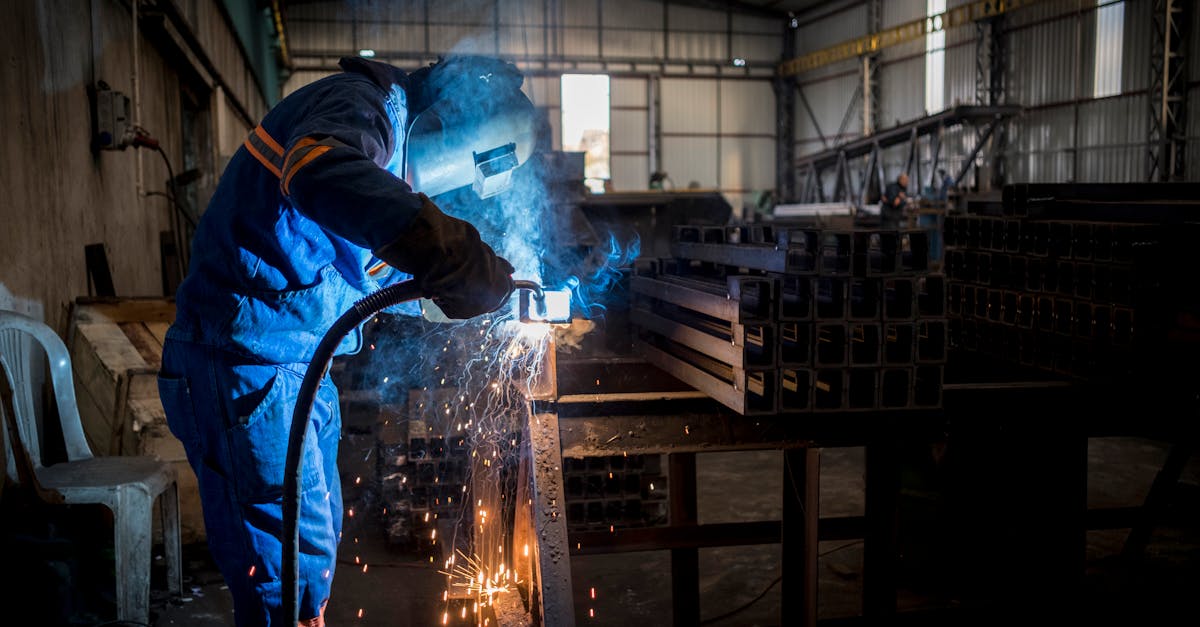Unveiling the Secrets of Gold Extraction: A Guided Tour of Processing Machinery

Embark on a captivating journey into the realm of gold processing, a field that unlocks the secrets of extracting this precious metal from its natural surroundings. Discover the transformative power of cutting-edge gold processing machinery, meticulously engineered to optimize every stage of the extraction process. Join us on an in-depth exploration of this remarkable technology, unlocking the secrets of efficiency and profitability in the quest for gold.
Key Insights into Gold Processing Machinery and Optimization
Key Insights
- Gold processing machinery plays a crucial role in the efficient and profitable extraction of gold from ores.
- Different types of gold processing equipment, each with specific functions, are used throughout the extraction process.
- Proper selection and operation of gold processing machinery are essential for maximizing gold recovery and minimizing operating costs.
- Implementing best practices, adhering to maintenance schedules, and leveraging emerging technologies can significantly optimize gold processing operations.
- By optimizing their operations, gold mining companies can enhance productivity, reduce costs, and increase profitability.
1. Introduction: The Significance of Gold Processing Machinery
Embark on a captivating journey into the realm of gold processing, a field that unlocks the secrets of extracting this precious metal from its natural surroundings. Discover the transformative power of cutting-edge gold processing machinery, meticulously engineered to optimize every stage of the extraction process. Join us on an in-depth exploration of this remarkable technology, unlocking the secrets of efficiency and profitability in the quest for gold.
Gold processing machinery plays a pivotal role in extracting gold from ores and other geological formations. It encompasses a diverse range of equipment, each designed to perform specific tasks in the gold recovery process. From robust crushers that break down large ore chunks to sophisticated gravity concentrators that separate gold particles from waste materials, this machinery forms the backbone of modern gold mining operations.
By employing specialized gold processing machinery, miners can significantly enhance their efficiency and profitability. This equipment automates many labor-intensive tasks, reducing operational costs and increasing productivity. It also enables precise control over the extraction process, ensuring optimal recovery rates and minimizing gold loss. Furthermore, advanced technologies incorporated into modern machinery allow for real-time monitoring and optimization, leading to even greater efficiency and cost savings.
2. Types of Gold Processing Equipment: A Comprehensive Overview

Types of Gold Processing Equipment: A Comprehensive Overview
The world of gold processing machinery encompasses a diverse range of equipment, each meticulously designed to perform specific tasks in the gold recovery process. From robust crushers that break down large ore chunks to sophisticated gravity concentrators that separate gold particles from waste materials, this machinery forms the backbone of modern gold mining operations.
One of the most critical pieces of equipment is the ball mill, a rotating cylinder filled with steel balls that grinds ore into a fine powder. This powder is then mixed with water and fed into classifiers, which separate the gold particles from the waste materials based on their size and density. Gravity concentrators, such as jigs and shaking tables, further refine the gold concentrate by utilizing the principle of gravity to separate the heavier gold particles from the lighter waste materials.
In addition to these core pieces of equipment, various other machines are used in gold processing, including flotation cells, magnetic separators, and smelters. Flotation cells use chemicals to create a froth that carries gold particles to the surface, while magnetic separators remove magnetic impurities from the gold concentrate. Smelters melt the gold concentrate to produce doré bars, which are further refined to produce pure gold.
3. Ball Mills: The Workhorses of Ore Grinding
Ball mills are the cornerstone of ore grinding, a critical stage in the gold extraction process. These robust machines pulverize ore into a fine powder, creating a larger surface area for subsequent processing. Their cylindrical shape and steel balls generate a powerful grinding action that breaks down the ore particles effectively.
Ball mills are typically composed of a rotating cylindrical shell lined with wear-resistant materials. Steel balls of various sizes are loaded into the shell, and as the mill rotates, the balls crush the ore particles through impact and abrasion. The grinding efficiency of a ball mill is influenced by several factors, including the size and hardness of the ore particles, the size and quantity of steel balls, the speed of rotation, and the mill’s internal design.
Proper operation and maintenance are essential to ensure optimal performance of ball mills. Regular monitoring of mill parameters, such as power consumption and product size, allows for timely adjustments to maintain grinding efficiency. Additionally, regular maintenance, including relining the mill shell and replacing worn steel balls, is crucial to prevent breakdowns and extend the mill’s lifespan.
4. Classifiers: Separating Gold from Gangue

Classifiers: Separating Gold from Gangue
Classifiers are indispensable equipment in gold processing, meticulously designed to separate valuable gold particles from unwanted gangue minerals. These machines exploit the differences in physical properties, such as size, shape, and density, to effectively sort the ore particles. Various types of classifiers are employed in gold processing, including gravity classifiers, centrifugal classifiers, and spiral classifiers.
Gravity classifiers, such as jigs and shaking tables, utilize the principle of gravity to separate gold particles from gangue minerals. Heavy gold particles settle at the bottom of the classifier, while lighter gangue minerals are carried away by the flowing water or air. Centrifugal classifiers, also known as cyclones, employ centrifugal force to separate particles based on their density. Spiral classifiers, which consist of a helical trough, separate particles based on their settling velocity.
Classifier performance plays a critical role in optimizing gold recovery. Proper selection of classifier type and operating parameters ensures efficient separation of gold particles from gangue minerals. Regular maintenance and monitoring of classifier performance are essential to prevent contamination of gold concentrate and maximize recovery rates.
5. Gravity Concentrators: Harnessing Gravity for Gold Extraction
Gravity concentrators are a testament to the enduring power of gravity in the realm of gold extraction. These simple yet effective machines utilize the principle of gravity to separate gold particles from gangue minerals, offering a cost-effective and environmentally friendly method. Various types of gravity concentrators are employed in gold processing, including jigs, shaking tables, and spirals.
Jigs are batch-operated devices that use pulsating water or air to stratify ore particles based on their density. Heavy gold particles settle to the bottom of the jig bed, while lighter gangue minerals are carried away by the upward flow of water or air. Shaking tables are inclined tables that utilize a reciprocating motion to separate gold particles from gangue minerals. The heavier gold particles settle on the riffles on the table surface, while the lighter gangue minerals are washed away by the flowing water. Spirals are helical troughs that separate particles based on their settling velocity. Heavy gold particles settle close to the inner wall of the spiral, while lighter gangue minerals are carried away by the flowing water.
The efficiency of gravity concentrators is influenced by several factors, including the type of ore being processed, the size and shape of the gold particles, and the operating parameters of the concentrator. Proper selection of gravity concentrator type and optimization of operating parameters are essential to maximize gold recovery and minimize the loss of valuable gold particles.
6. Case Studies: Real-World Applications of Gold Processing Machinery
Case Studies: Real-World Applications of Gold Processing Machinery
Delve into the captivating realm of real-world case studies that illuminate the successful implementation of gold processing machinery. These case studies provide invaluable insights into the challenges faced, the solutions employed, and the remarkable outcomes achieved by mining operations around the globe.
One such case study examines a gold mine in a remote region with limited access to water. The mine successfully installed a gravity concentrator that utilized a novel water recycling system, significantly reducing water consumption and minimizing the environmental impact of the operation. Another case study showcases a gold processing plant that employed advanced sensor technology to optimize the performance of its ball mills. This technology enabled real-time monitoring of mill parameters, resulting in increased grinding efficiency and reduced energy consumption.
Additionally, a case study from a large-scale gold mine highlights the successful implementation of a comprehensive gold processing plant. The plant incorporated a combination of gravity concentrators, flotation cells, and magnetic separators to achieve exceptional gold recovery rates. The case study delves into the challenges of processing complex ores and the innovative solutions adopted to maximize gold yield.
7. Conclusion: Optimizing Your Gold Processing Operations
Conclusion: Optimizing Your Gold Processing Operations
As you conclude your exploration of gold processing machinery, embrace the opportunity to optimize your operations and maximize profitability. By implementing best practices, adhering to maintenance schedules, and leveraging emerging technologies, you can elevate your gold processing operations to new heights of efficiency and success.
Regular maintenance is paramount to ensuring the longevity and performance of your gold processing machinery. Establish a comprehensive maintenance schedule that includes regular inspections, lubrication, and replacement of worn parts. Utilize predictive maintenance techniques to identify potential issues early on, preventing costly breakdowns and unplanned downtime.
Stay abreast of the latest advancements in gold processing technology. Innovations such as sensor-based monitoring systems, automated control systems, and AI-powered optimization algorithms can significantly enhance the efficiency and profitability of your operations. Explore these technologies and consider integrating them into your gold processing plant to gain a competitive edge.
By adopting best practices, implementing a proactive maintenance strategy, and embracing emerging technologies, you can optimize your gold processing operations, increase productivity, reduce costs, and ultimately maximize your return on investment.
What are the key factors to consider when selecting gold processing machinery?
When selecting gold processing machinery, it is crucial to consider the type of ore being processed, the desired recovery rate, the operating costs, and the environmental impact. It is also important to ensure that the machinery is compatible with the existing infrastructure and meets the safety and regulatory requirements.
How can I optimize the efficiency of my gold processing operations?
To optimize the efficiency of your gold processing operations, focus on regular maintenance, operator training, and process monitoring. Utilize technology to automate tasks, implement predictive maintenance strategies, and track key performance indicators. Additionally, explore opportunities to reduce energy consumption and water usage.
What are the latest trends in gold processing technology?
The latest trends in gold processing technology include the use of sensor-based monitoring systems, automated control systems, and AI-powered optimization algorithms. These technologies enhance efficiency, reduce costs, and improve safety. Additionally, there is a growing focus on sustainable and environmentally friendly gold processing practices.
Key Insights into Gold Processing Machinery and Optimization
Table of Key Insights
| Insight | Description | |—|—| | Gold processing machinery is essential for efficient gold extraction | Specialized machinery is used to grind, classify, and separate gold particles from ores, maximizing recovery rates. | | Different types of gold processing equipment serve specific functions | Ball mills grind ore, classifiers separate particles by size, and gravity concentrators utilize gravity to extract gold. | | Proper selection and operation of machinery are crucial for optimization | Choosing the right equipment and operating it correctly ensures efficient gold recovery and cost reduction. | | Best practices, maintenance, and technology can optimize operations | Regular maintenance, implementation of best practices, and leveraging emerging technologies enhance efficiency and profitability. | | Optimizing gold processing operations leads to increased profits | By optimizing their operations, gold mining companies can boost productivity, reduce costs, and maximize their return on investment. |